Finding Your Creative Voice So That You Can Heal Trauma With Lane Gardner
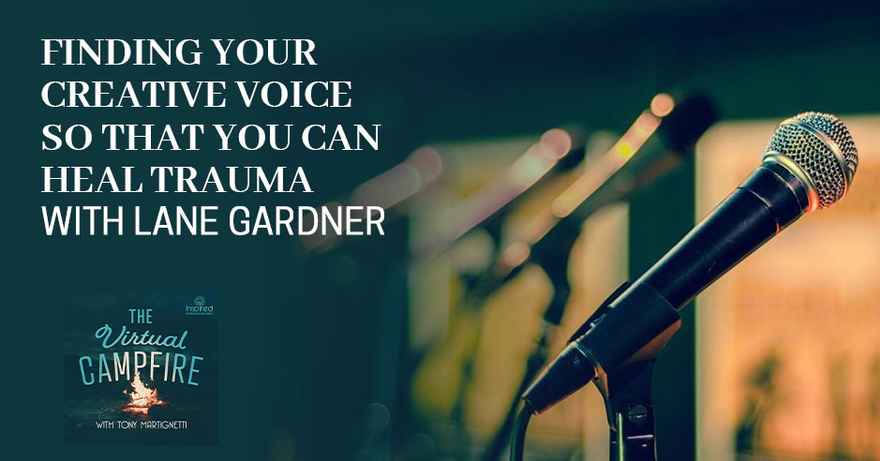
Everyone has trauma that needs to be healed. One way of healing is by using the power of art. It can be anything from writing to acting. You just need to find what medium fits you so that you can start your healing process. For the founder of THREAD, Lane Gardner, music was her medium so she became a songwriter. She heals people's trauma with her music. That is her creative voice that gives her the ability to connect with people. Join your host Tony Martignetti as he sits down with Lane to talk about trauma, music, and much more. Find your creative voice today!
---
Listen to the podcast here:
Finding Your Creative Voice So That You Can Heal Trauma With Lane Gardner
It is my honor to introduce to you my guest, Lane Gardner. Lane is an arts educator, singer-songwriter, President and Founder of THREAD. As a long-time trailblazer in the field of therapeutic arts, Lane’s work is an emerging voice in a world where innovative solutions to our rising mental health crisis are desperately needed. As an award-winning art educator, singer-songwriter and nonprofit entrepreneur, Lane uses the power of music and creativity to facilitate healing and growth in individuals and communities suffering from trauma.
For many years, Lane has devoted her life’s work to helping herself and others learn how to transform their personal experiences of trauma into powerful works of art. Her passion for the human journey and cultivating connection through our shared experiences led her to develop a therapeutic collaborative songwriting program that merges creativity, self-expression, healing and community. She lives in New York with her husband and three kids. It is my honor and pleasure to welcome you to the show, Lane.
Thanks, Tony. I’m thrilled to be here with you.
I’m looking forward to digging into your story of what brought you to do this amazing work in the world. I promise not to ask you to do any singing unless you are called to do it.
I don’t have my piano with me. It might be barred at the moment.
That will give people a breadcrumb to go after to find out more information and see what else you do. That will leave them wanting more. One of the things that we do here is we create these conversations where we want to unwind the story that had brought you to where you are now through flashpoints.
These are the points in your journey that have ignited your gifts into the world. As you’re sharing your story, we’ll pause along the way and see what’s showing up. You can start wherever you like and you can share what you’re called to share. I’m looking forward to having you share what brought you into the world of doing what you’re doing.
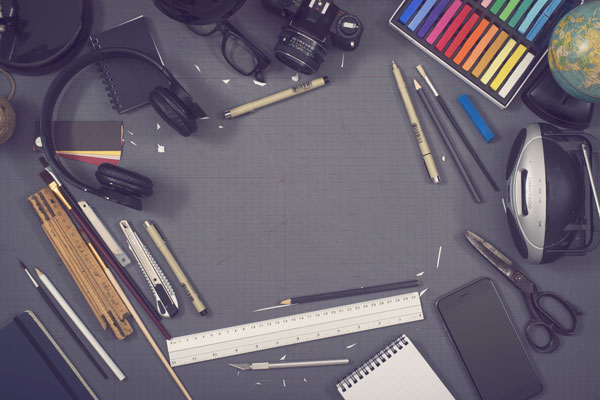
It started at a very early age. I came from a childhood that was difficult and traumatic. My mother was a gifted pianist, and my father was a highly decorated Vietnam veteran. He was a MedEvac pilot in Vietnam and ran dangerous rescue missions into the jungles there to save his fellow wounded soldiers. My life started at a time when my father was returning home from Vietnam and he was completely crushed under the weight of PTSD. My parents divorced within a year. At that point, there was no understanding or support for what our soldiers were going through.
I had this very critical moment at age four when my parents split. We found ourselves back in my grandparent’s house when I was very young. My mom was struggling. I don’t have a lot of memories of it. What happened with her was within a year, she joined a religious cult. She remarried someone who was turned out to be a difficult, traumatic, and abusive element in my life. At such an early age, I had to get scrappy about figuring out how to survive.
My mother was a pianist and I also had other generations in my family of self-taught musicians, my grandfather, aunts and uncles. Even though I was in this very difficult situation as a young person, I had this lifeline, which was the fact that my family came together regularly for musical jam sessions. I started to understand the power of music. These were self-taught musicians. It was about having fun, connecting, and being together. This transcended all the difficulties that we were experiencing.
This experience stuck with me that creativity and music could create connection, healing, and experience with people that didn’t require figuring stuff out. It was beyond words. As my life went on at around age nine, I started getting into the local community theater, taking voice and acting lessons. That ended up being my escape from the challenging situations that I was in at home. That was a safe and protective space. That was a community where I could start to discover who I was and what my gifts and talents were.
I would do that for the rest of my high school years. I went on to become a professional singer-actor. It was my first career as a young person. I went to a conservatory to study musical theater and classical voice. Throughout that period of time, I was comforted by not only the community and the safe space that I was in, but I was also comforted by being in somebody else’s stories as an actress and singer. I was singing somebody else’s songs and portraying a character that was somebody else’s story. That got me through a lot of my younger years. It was an escape, a safety net, and a lifeline.
Those early years of being in the arts are what kept me alive. The people that I’ve met and the connections that I’ve made were certain kinds of people. They weren’t all professional artists, but they were people who had shared humanity and experiences that brought them into the arts and the world of storytelling. That shaped me as a young person. It sets me up for the next chapter of my life, which became much about teaching, using this stuff that I was learning and had learned to young people and adults. For the most part, that early age was formative for me. I would say that the arts saved my life.
There is something about what you shared that is powerful, and so many things about it are powerful. One of the things that are coming up for me is this element of being around the right people that allow you to express yourself. You could have been around a group of people who are into the arts but they don’t create a safe space for you to express yourself in a way that is safe.
Often the thing that we run into in different circles is the competitive nature, and the circles where people tend to think like, “I have to be better than other people.” Did you run into that at all? Was that simply like you found yourself in this more of a sense that everyone is supporting each other to become the best that they can be?
Good art comes from people who are communicating from a heartful and authentic place.
It’s the latter. When you are in a creative space, rehearsing shows, learning songs, and playing characters together, there is an element where everybody is on the same team. It requires everyone to step in and be a part of creating not only this show, performance or concert, but it requires that each person brings their creativity and open-heartedness to the process.
Were there occasional situations that I was in where there was a bit of a diva situation? Of course, but the overarching experience was that we all could bring our authentic selves to the table because that’s what makes good art. It’s when people are communicating from a heartful and authentic place. I don’t know if you can relate to this when I say it, but there are times when I see an artist singing a song, performing a concert, or in a show on stage, and there is a moment sometimes where I feel the tears in my throat when you’re watching them. That is my experience.
That’s when you can feel the heart and soul of that person and the creativity that has a beauty to it. It’s cellular and you feel it. Oftentimes, that’s what the arts communities have amongst them. We’re in it to transcend the “cutthroat experiences.” The arts have this ability to help us know ourselves better and help us understand each other better. That makes for a lot of authentic human relating that isn’t based on trying to outdo the other person.
The word that keeps coming up for me is freedom of expression. It’s the ability to allow yourself when nothing is holding you back and no boundaries. You’re resonating right from your soul. Your soul is singing and you’re able to give all of the things that are inside out. That is very healing because oftentimes, we walk around holding ourselves back from being fully free.
When you were describing that story about feeling it in your throat when you hear a singer singing their song, there’s something about that that I can relate to. I’m sure many people who are reading can relate to that. It’s the feeling of letting their story fully out, and it’s coming from a place deep down inside of them. It is the soul that is coming out.
In my experience both as a human being and somebody who’s been involved in the arts as an artist, teacher and facilitator, that is the thing that we all need. We need to feel that not only within ourselves but between each other. We need to have that connection and experience of our souls being free to express themselves. That’s so much easier said than done. We can talk about that in terms of the way in which this work that I’ve developed about that. The experience of having that freedom of expression or authenticity is where each of our authentic power and purpose lies.
It takes a while. It’s a lifetime job to continue to uncover the depths of your authentic self, and all the layers that got piled on top of us from our families, society, expectations and all of these things. You don’t have to be a “creative person” or an “artist” to creatively express yourself authentically. You do that by simply finding the deepest parts of you that are the most resonant, the most free, and the most aligned with you. That takes time and effort to do and find that. To the whole point of your show, Tony, it’s about the purpose of what your gifts are bringing to the world. How you can do that? That soul through this creative process is an avenue to uncover that for each of us.

I want to get back into understanding what happened as you started to evolve in your path, but there’s something that you started to tap into here. It’s to say, sometimes our words fail us because we are trying to think our way through life and using our minds to say things. Not that I'm a singer but here is my theory. It’s that singing comes from the heart. It doesn’t come from the mouth per se or the mind putting words out there. The words are coming from our hearts and that’s what makes the big difference. Prove my theory right or wrong.
I’m going to prove it right in multiple ways. My background, training, and skillset are as a singer. That’s my wheelhouse. I’ve also been a voice teacher for many years. My experience of learning how to not only teach my own students but continue to grow as a singer and find that authentic sound within me is about what you’re talking about, which is it is from the heart but it is also from the body and the breath.
One thing that I had to discover for myself and experimented on all my students for many years was we often don’t breathe well as human beings. We’re walking around with all kinds of stress in our bodies. I’ve realized over the last 20 to 30 years of my life, my diaphragm and all the places that I use to breathe, I hold them very tightly. Part of the process of singing, speaking, communicating or creating freely comes from this experience of learning how to open up your breath and body.
Inside of all of that experience is this freedom that we’re speaking of. You can tap into parts of yourself that are often blocked by daily life, stresses, and things that you have to get to. I’ve discovered in my own journey, both as an artist and as somebody who helps other people with creativity, that we often have to start at the center of our bodies.
From there, you start to free up your creative voice, whatever that is. It doesn’t have to be singing. It could be anything like cooking, ice skating, or designing a whole new product. Creativity isn’t just about being an artist. Going back to this idea of tapping into your own essence, tools, power, and authentic being. It comes from the breath, the heart, and the connection between them.
I love what you’re sharing. This is so powerful. It’s a reminder that I and all of us need to breathe deeper sometimes. It also reminds me of the word that I always think about which is inspiration. Inspiration is about breathing life into. That’s an important thing that we breathe into life.
I never thought of it that way before. That’s the one I’m going to take with me from this conversation. It is that inspiration is about breathing into. That’s a great connection. Thank you for that.
Let’s get back into your story. What brought you into doing THREAD. I know that you started to talk a little bit about getting into teaching, but there’s more to the journey than that.
If you want to free up your creative voice, you have start at the center of your body.
Before I graduated from the conservatory, I was offered an opportunity to create a little after-school arts program at a local elementary school. I had never been taught about it before. I thought, “I grew up in the arts and the theater. This can’t be so hard.” I decided to create a program that was like, “How could I help these young people feel better about themselves?” That’s the basics of being in the arts. From there, it took off. I was probably twenty years old at that time.
Over the next 30 years, I experimented with all kinds of programming and human development through the arts, whether I was teaching in elementary school or at a youth center. Outside of the time that I was performing in shows or whatever, I was teaching as well. That both taught me a lot about myself, about human beings, and how extraordinary they are. That was my whole life until I started to realize that I was falling out of love with performing.
I started performing as a child. Every time I would go into an audition, I was feeling like, “I’m not loving this anymore.” Fast-forward, I was having a beautiful baby boy in 2004. I had this incredibly life-changing experience with that. As a new mom, I was suddenly hit with all kinds of traumatic experiences. I was having panic attacks, enormous postpartum depression, and irrational fear of leaving him even for a couple of minutes. I was like, “What the heck is going on here?”
It took me a while to figure out what was going on. Because of my own childhood being raised in such a traumatic environment, becoming a mom put me square in some very old childhood trauma. What that forced me to do is I realized I was in a crisis moment. I was a young mom, I had an infant, and I had to figure out how to get it together. I was like, “Let me go to the one thing that I know how to do, which is music.” What I found by doing that was I realized that I could no longer tell other people’s stories by being a character in a musical. I needed to start to dive into my own stories.
It’s interesting because looking back, I realize that for the first fifteen years as a teacher, I wanted nothing to do with my own stories. I was content to help other people uncover their own journeys. I was keeping and protecting myself. When my own stories came up to bite me in the butt, I was like, “Isn’t that how it goes? You teach what you have to learn yourself.” I delved into songwriting and I never had any experience with writing songs. I had written stuff in the past but not as a songwriter.
The elements of music were a real safe container for me to learn how to tell my own stories without getting completely crushed under the weight of the trauma. It was a safe passage. If I could turn my anger into a driving rhythm that expressed my anger without having to get triggered by it, that would be a powerful transformation. If I could write lyrics that expressed my rage or terror in a creative way, there was a safe passage there. I found that there was an incredible healing process for me in writing these songs. It all started pouring out and I couldn’t stop. All was ready to come tumbling out.
I realized that this element of sharing your story for healing for transformation was the next step in my development as a teacher, a facilitator, and a person who was so passionate about using art as a way to help people. I had to go through my own crisis point to take me to the next step as the work that I feel is my purpose in life. I experimented with that for the next ten years. How do I do this with people while I am still doing it with myself?
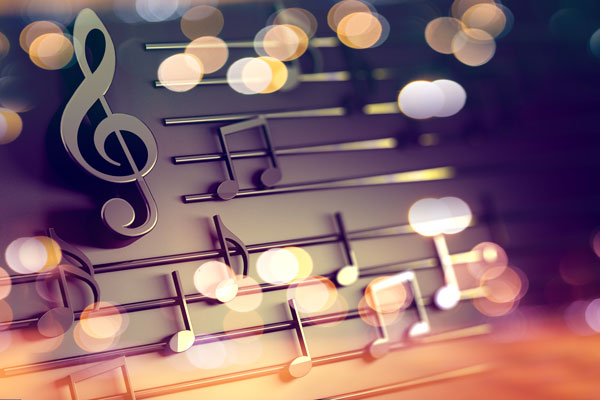
I had this amazing experience in 2018. My husband, Pete and I were asked to work with students of Marjory Stoneman Douglas High School in Parkland, Florida, a few months after the horrific mass shooting there. I have this process that I had been developing for a long time. We brought this therapeutic collaborative songwriting process to that moment in time. We were working with a licensed music therapist and collaborating with her as well in this process.
It was a very short process but it changed my life, and I know that it changed the lives of the young people we were working with who have been through this horrific tragedy. When we got there, they were still in that trauma. In one of the courses on these days, we helped them to tell their story in a creative and shared way. They all had their own experience of something that they lived through together.
What happened was they created not only this incredibly powerful work of art. They transformed their trauma into something that was so beautiful that will not only help them but when they shared that song with the other students in their school, there was this collective healing that happened as well. That changed me forever. I thought, "This is it, isn't it?" It's the individual and the collective process here by not only sharing your own individual experience but knowing that you're sharing your individual experience as a part of a collective experience. The healing happens on these two big levels.
That’s when I set out to start this nonprofit, THREAD, which was designed to expand the circles of the way this work can help people. Trauma is so pervasive. You don’t have to go through a mass shooting to have trauma. Trauma is in all of us, whether it’s an experience that you had as a young person being bullied or the inequality that you’re dealing with because of your skin color or who you love. It doesn’t matter what these experiences are. We all have them, and we all share them with a group of people who have a similar experience as us.
The arts can do that. It can deliver that individual and collective healing that creates a safe space and connection between our shared stories. We can do it in a safe container, which is the art form itself as a supportive thing. We’re at the point now where we’re getting started with what we can do with this. I believe with all of my heart that this is one of the innovations that we need in mental health now and help us heal from not only the long-term trauma that we all have in our own way. We’re in this collective crisis moment with COVID that we are being impacted by on a daily basis. We need some innovative ideas and solutions.
Mental health is something that people are more willing to talk about now because they’re getting crushed by their own mental health, and they need solutions and help. Talk therapy and support groups are not for everybody, but if we can have something that is creative, fun, cathartic and collaborative, it is an alternative to helping ourselves not only feel better but create something beautiful in the process.
There are a couple of things I want to react to because what you’re describing is so powerful. Number one is the thought of something beautiful. Beauty is in the eye of the beholder. The perfectionist and a lot of the people would say like, “I’m not an artist. I can’t do this. If it’s not perfect, I don’t want people to see that.” It’s not about that. It’s beautiful because of what gets created and transformed into the healing that happens through this process.
The second part of this for me was to say that what’s beautiful is the process of creating it, but also the thing that gets created, whether it’s a piece of music or art. That is the reminder of what was released from this collective, which is also something that helps people to remember. You don’t leave your past behind. You include it and then you transcend it.
Open up the door for everybody to find the thing that they want to use as their voice.
I want to respond to the point that you’re making about people who feel that they’re not an artist or creative, “I couldn’t possibly do that because that is not my jam.” This work is designed for exactly those people. I want to share my experiences over the years of doing this work. Everybody who is a part of those collective processes tends to find their comfort zone in this creative process.
For example, some people find the thought of singing terrifying, but they might be drawn to this idea of, “I can write some lyrics. I feel like I can create a rhythm that I hear that would be expressing my feelings, anger and joy. I can make a rhythm. I’m attracted to these congos or shakers.” That’s the way I’ve designed the work. You open up the door for everybody to find the thing they want to use as their voice. Sometimes that’s singing, writing, or playing an instrument.
Each person is able to contribute their story to the collective fabric of the song. That is the structure of the song and these elements. We took the participants through these exercises that allowed them to learn how to transform an emotion into a rhythm, melody or sound. That is the base of our project or our art. Everybody can listen to that song and be like, “That’s my thing. That was my experience. I’ve got that rhythm in there, and I can hold onto that. That’s me, my experience, and my contribution to this whole.” That’s what makes it transformative for each person that goes through the process.
Everybody has skin in the game. It’s not about being an artist. It’s about learning how to transform your feeling or part of your story into something that’s not necessarily words. Maybe it is, whatever you come into it. The other part of your question or observation that I want to acknowledge also is the process is twofold. The first part is this therapeutic, collaborative, creative process where the participants have the opportunity to share their stories and find the common. That becomes what the song is about. Through that process, they are able to transform their difficult experiences into something amazing and beautiful.
The second part of it is that the songs are there for them to be reminded of the journey, courage, strengths, and everything that they are bringing to the table. They can be reminded of that if they’re having a hard day, “Let me listen to that thing. That reminds me that I’m okay.” That’s one piece. The other piece is that the songs are supposed to be shared to cultivate conversation about mental health and help destigmatize the difficult things we all are going through.
A lot of our human nature is to sweep stuff that’s hard under the rug, and we don’t want to look at it. If you can listen to a song and that can be an easy way to cultivate a conversation about something that we can address that’s difficult in a safe and supportive way, then the art is doing its job in a profound way.
This topic has been so amazing to hear. It’s comforting to get these topics out there for people to know and say like, “Don’t suppress these feelings and yourself. Express and allow yourself to get out there, and know that this is the way for us to get back connected.” Find ways to do these types of activities together and create something together. It’s not just for the people who diagnose themselves as having some challenges mentally, but also everyone. Everyone needs some connection. Through a medium of art and creativity, this is how we can come back together in a powerful way and memorialize the challenge we’ve collectively gone through. This is for everyone to some extent.
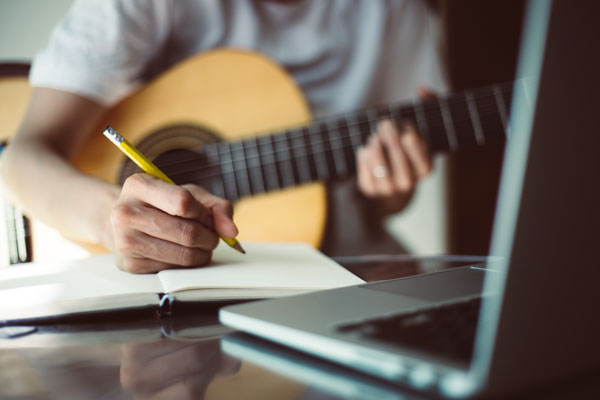
It’s a real moment in history where we need something. One of the things that I’m feeling for myself as well as for people in my circles that I’m talking to is that we want things to go back to normal. Wouldn't that be awesome to be like, “Let’s put it all behind us. Let’s go right back to where we were. Everything is great.” However, that’s not reality. One of the things that we’re all realizing is that our instincts don’t want to acknowledge what we’ve been through and what we continue to go through. We don’t want to touch the stuff with a 10-foot pole. We’re tired of it. It’s scary and hard.
Nobody is excited to talk about trauma. Who wants to do that? It’s the last thing that anybody wants to have to lift the lid on. It’s becoming intolerable for us in certain ways. It’s piling up to the point where even if we want to avoid it and sweep it under the rug, it’s showing up in elevated levels of anxiety or depression. If you look at the data that’s coming out of the CDC now, the increase of mental health symptoms is happening and it continues to grow.
The medical professionals are also worried that it’s going to keep getting larger and larger, especially as the pandemic eventually subsides. We have to sit in the aftermath. We are going to need and continue to be now. As much as we want to go back to the way we were, we have some individual and collective healing that we need to do in order to move forward. That’s why THREAD’s work can serve a lot of purposes now because we’re so reluctant to want to deal with the hard stuff. If we could do it in a way that’s creative, collaborative and helpful, it’s a way forward.
It’s a bit of a third road between digging up all your difficult stuff versus feeling triggered by it all versus having to suffer in silence with all the symptoms that you’re living with and not getting any support. It’s a middle ground of both getting the support and connection but also having something creative that doesn’t make it scary. It makes it more compelling, safe and supportive. That’s where we’re at now. We don’t want to deal with it but we’re going to have to, and we need some new ideas.
What you’re doing is a great platform for us to move forward in a positive way. The statistics you’ve mentioned are just the tip of the iceberg. There are some other things like drug abuse and suicide that are on the rise. There are so many things that have been off the charts. I want to shift the topic to something slightly different from what we've been talking about. I want to put the camera back on you. What have you learned about yourself in this journey, besides what you’ve shared already that you want to reflect on? What are some lessons that you’ve learned about your journey that you want to share?
One of the main things that I have come to realize, and this is something that I’m learning is also typical of people who have had early trauma, is that I have always believed that I have to figure all this out on my own. These are survival mechanisms. I had to do that as a child. I had to figure out independent ways of staying alive. I’ve carried that into my adult life.
One of the biggest lessons that I have learned and continue to learn every day is that I need connection and support. As much as I am so passionate about bringing this kind of help to others, you’re only as strong as the circles that you are in. I become more self-compassionate. I had to remove that superhuman strength expectation of myself. It helped me so much. It’s a bit of a weird shift in my lens, but it made me feel so much more connected to myself and other people in my life. It has also made me realize that I need people as much as they need me, and we are all in this together.
Everyone still has some individual and collective healing that they need to do in order to move forward.
That’s one of the biggest takeaways from my entire journey. We’re all here together and we all bring our unique gifts and talents to the table. We all need each other’s expertise and wheelhouse. We have the ability to create a very different experience as human beings. That’s a huge piece for me. Going back to this perfectionism thing that you were talking about people feel like they can’t be creative and artistic because it’s not going to be perfect. I have that perfectionism too.
I was joking with somebody that I only realized that I don’t have to have the dishes all washed before I go to bed every night. I have this crazy perfectionism, and it’s served me well in a lot of ways. It’s pushed me to create and do a lot of things that I’ve needed that grit and detail, but it has exhausted and drained me. It costs me a lot of my ease and joy in life. The other thing that I wanted to express for all of my fellow perfectionists out there is perfectionism costs too much. We can strive for it to be a much greater mix of unfinished business and imperfection. The dishes should stay in the sink to put a little metaphor on them.
Life is too short and perfectionism is too tiring. Going back to our initial topic, what is in your heart? What is in your soul? That is perfect regardless of how hard you work at it and to have that growing self. I love to say that I’m perfect inside of my heart and soul. I don’t have to make it all out in the world because aligning yourself with your own gifts, talents and authenticity is the perfection that brings joy to yourself and other people. It inspires other people to do the same. For me, at this moment in my life, that’s a value that I’ve had to fight hard for, and I’m glad I found it.
To summarize, allow your soul to sing and your dishes to stay dirty. I love everything you’re sharing. The way you share it is on point. I’m grateful for everything you’re sharing. I have one last question. What are 1 or 2 books that have had an impact on you and why?
I have two very different books. The first book that made an impact on me is a book called The Desire Map. It’s written by an interesting woman by the name of Danielle LaPorte. The book is designed to be also a bit of a workbook in addition to this mindblowing lens-changing view. The thing that I love and continue to love about it is she helps you uncover how you want to feel. She takes you through all these different extraordinary exercises.
When you understand how you want to feel, you end up identifying 5 or 6 words, then you can create your values with a way in which you create life, whether it be your relationships, work, avocation, connection with the divine, and all of these different elements. You’re basing it on the most authentic understanding of yourself which is, “How do I want to feel in life.” We don’t think that way as people. We think about, “What am I supposed to do? What’s expected of me?” That was a mind-blowing book. I recommend it to anybody.
I did it years ago right around the time that I was finishing up my album. I wanted to take a look at how I will put this out into the world. I happened to go back to the notebooks that I had from that book years ago. All of it is still stuck, and I’ve changed so much over the years. The process of identifying these deep desires of how I wanted to feel and what my values were are still standing strong. I would say to anybody who resonates with it, it’s a bit of a life-changer. That’s my first book.
For the second book, some people might laugh at me but I love this book. I had it as a child. It’s called, The Monster At The End Of This Book. I used to read this book constantly as a child. It was very compelling. It’s a page-turner. The entire book is trying to keep you from turning the page because you’re going to get closer to that monster at the end of the book. In my life, I’ve had to confront a great deal of fears and find a lot of grit to face a lot of difficult things. There’s something about that book.
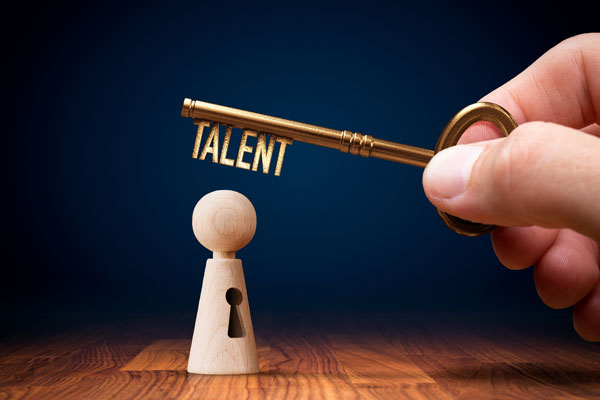
I was telling my therapist about this book many years ago. He said, “I think you need to buy and have it,” and I did. I think about the things that I get terrified of like, “I don’t want to turn that page because there’s going to be something terrible that’s about to happen.” Spoiler alert, at the end of the book, it’s not a monster. It’s him. He’s facing himself and he’s continuing to grow and become more courageous. I always go back to that book when I’m feeling scared or terrified of what life throws at me. It’s a childhood book that still stands the test of time for me. It reminds me of, “You got this. You can handle it. There’s no monster at the end of the book.”
I love that you brought that book into the space because when I hear people bringing childhood books, there’s something about it that these authors know their stuff. They know what it takes to connect us with the challenges we’re going to face as adults. It’s not that uncommon for us to see them pop up again. There’s a treasure trove of interesting things that pop up, and their lessons are timeless. I could talk to you for hours upon hours, but we have to come to a close. I’m so thankful and grateful for all of your insights, stories, and all the magic you brought into this space. Thank you for coming to the show.
Thank you. It is truly my honor to be able to talk with you. I have loved both our previous conversations and the conversation that we’re having now. Thank you for the opportunity to be on your show and to share what we’re all feeling on some level. I hope that your readers feel that they’re not in this alone. We’re all here together. Thank you so much for the opportunity, Tony. It’s been great.
Before I let you go, I want to make sure people know where they can find you. Do you want to share the best location for finding out more information about yourself?
There are two websites. One is my personal website which has all info, links, and connections. It’s LaneGardner.com. The website for our nonprofit is THREADConnects.org. That’s much more focused on the work that we were talking about. You can find us on Instagram, @THREADConnects, and on Facebook, @THREADConnects. We’ll keep trying to get the word out.
You’ve got my attention. I’m going to be out there spreading the word as much as I can because I believe in what you’re doing. That’s a wrap. Thank you to the readers coming on the journey with us. I’m looking forward to making sure we keep on making the world a better place through connection and being creative together. Take care.
Important Links:
- THREAD
- The Desire Map
- The Monster At The End Of This Book
- LaneGardner.com
- @THREADConnects – Instagram
- @THREADConnects – Facebook
About Lane Gardner
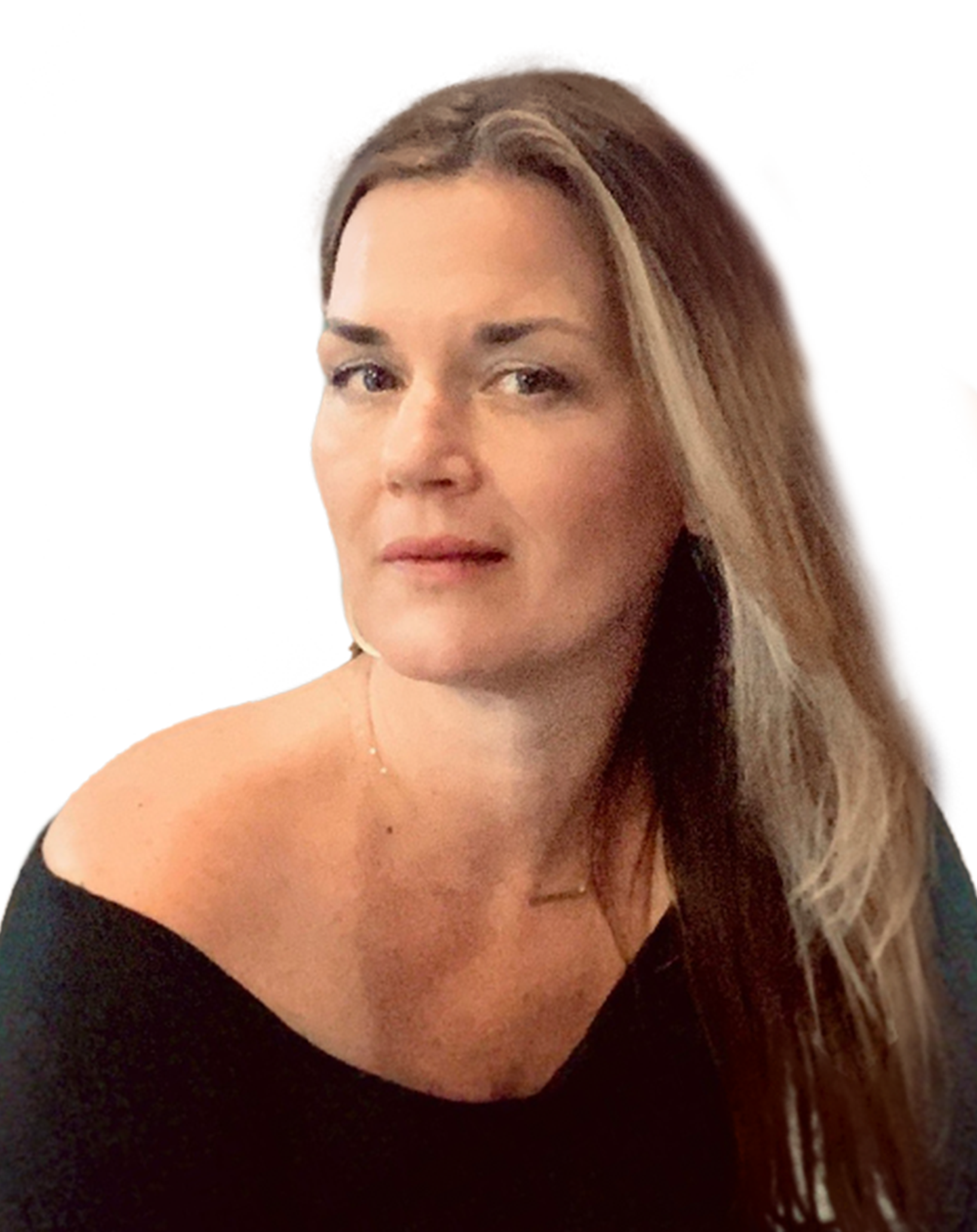 Lane Gardner is an award winning arts-educator, a singer-songwriter, and a non-profit entrepreneur who utilizes the power of music and creativity to facilitate healing and growth in individuals and communities.
Lane Gardner is an award winning arts-educator, a singer-songwriter, and a non-profit entrepreneur who utilizes the power of music and creativity to facilitate healing and growth in individuals and communities.
Lane’s therapeutic arts non-profit organization THREAD is featured in American Songwriter! Click the link above to read more about her innovative, creative and collaborative approach to healing trauma through music and songwriting.
Love the show? Subscribe, rate, review, and share! https://www.inspiredpurposecoach.com/virtualcampfire
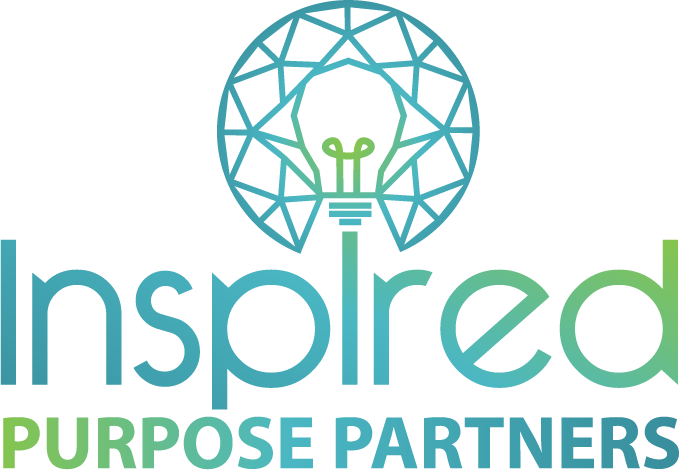

0 comments
Leave a comment
Please log in or register to post a comment